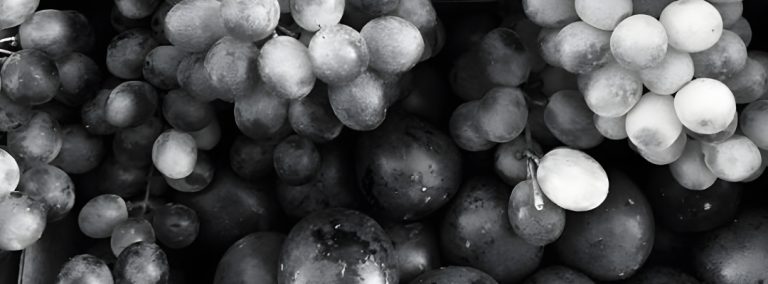From Verdicchio to Gavi, you have plenty of options if you’re looking for a dry white wine from Italy. Most Italian whites are produced with little or no oak treatment.* This means that instead of tasting the wood, you end up with more primary fruit and wine that finishes with good acidity and freshness. Soave is a classic Italian white wine from just outside of Verona that’s fresh and balanced with notes of peach and stone fruits. In Sicily, the slopes of Mount Etna are covered in hillside vineyards from which they make Etna Bianco, a dry white wine with hints of lemon and a crisp finish.
Italy is of course famous for its Pinot Grigio, but did you know some of the best Italian Pinot Grigio comes from the northern regions, in particular Friuli, Alto Adige, Trentino and Veneto? See below for our guide on how to choose a good bottle of Pinot Grigio. There are also some noteworthy Italian Pinot Biancos and Sauvignon Blancs you should try.
Overall, you’ll find Italian white wines tend to be relatively affordable, offering a high level of quality with a degree of elegance for around $15 to $35 a bottle. They’re usually light to medium in body, and they pair well with different dishes. In fact, an Italian white is one of the best wines to take to a dinner party, either to drink with dinner or open in the kitchen before the meal. It’s wine that can be served with hors d’oeuvres, like raw shellfish and cheese boards, or accompany a meal of seafood, pasta, poultry or other white meats. Note, for red meat you are best off with a bottle of red.
Where in Italy do they make white wine?
Many of the best Italian regions for white wine are in the North, near the mountains, or in coastal areas, where the temperatures are not as hot. You’ll find vines are typically grown in limestone, chalk or volcanic soils.

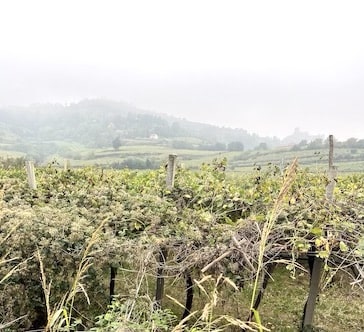
History of white winemaking in Italy
In the past 75 years, winemaking in Italy has changed considerably with winemakers adopting a number of modern practices for white wine production, including temperature controlled fermentation in stainless steel and cement, and using gentle presses to extract free run juice. More attention is now paid to the vineyards, reducing yields and ensuring grapes are fuller. This means the wines better capture the charm and characteristics of where they’re from. Italian winemakers have also started planting on more hillsides and identifying specific sites in a vineyard that produce the best quality wines.
7 Dry Italian white wines to try
Soave
From the Veneto area of northwest Italy, Soave is a dry white wine that’s both young and fresh and has characteristic flavors of peach, apricot and other stone fruits along with almond aromatics and good minerality. A typical Soave Classico is made from 70% or more Garganica grapes with Trebbiano di Soave or Chardonnay making up the remaining percentage.



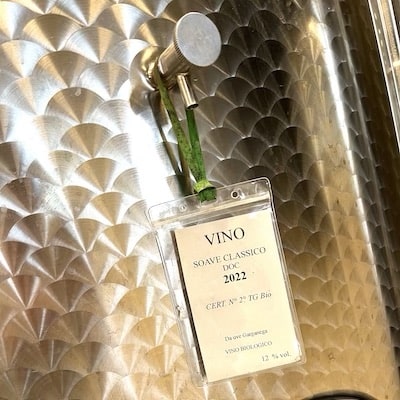
Many of the leading producers offer Soave Classico from single-vineyards. Look for Pieropan for an ideal Soave to start with. In addition to Classico Soave, Pieropan also makes La Rocca and Calvarino single-vineyard Soaves grown in limestone clay and volcanic soils respectively. The vines at Pieropon are organically treated and picked by hand. Calvarino even has the distinction of being Italy’s first single-vineyard wine designation.
For food pairings, Soave goes well with seafood and Asian dishes but also makes a beautiful accompaniment to a fresh goat cheese salad or a sautéed artichoke and chicken dish. Soave is a wine you can drink young but can also put away for 2 to 3 years.
Wine tip: How do you know a wine is dry? Wines that are dry have less sugar in them. This means they don’t taste sweet. Your average dry white wine will have 1 to 2 grams of sugar in a 6 ounce glass, or less than 10 grams of sugar in a bottle. If you’re new to wine, you may be tempted to describe fruit flavors as sweet. But, if a wine has notes of melon or apricot, it’s not necessarily sweet, just fruity.
Pinot Grigio from northern Italy
Pinot Grigio is one of the most popular wines in America (note Pinot Grigio and Gris are the same wine, they just use the Italian or French version of the grape name). At its best, Pinot Grigio can be a full-bodied wine characterized by herbs and spice along with primary fruits, including citrus and yellow apple. But not all Pinot Grigio tastes this way. There is a lot of commercially grown and mass produced Pinot Grigio, both from Italy and the rest of the world, that lacks complexity and character. In other words, it’s just a dry basic table wine.
Fortunately, you can choose a handcrafted Pinot Grigio from northern Italy and you’ll get a rich, aromatic, and beautiful dry white. Look for a wine from these regions:
- Alto Adige makes Pinot Grigio that is more on the light to medium-bodied side. This wine can have good minerality and may be quite crisp with lemon and floral notes.
- Friuli produces more medium to full-bodied Pinot Grigio that has good texture and floral notes, alongside spice and herbs. In particular, look for wine from the Collio and Collio Orientale areas within Friuli.
- Veneto and Trentino also make Pinot Grigio but you won’t necessarily know this by looking at the bottle. Instead, you’ll see Delle Venezie DOC on the label which indicates the wine was made according to a specific set of guidelines. The Della Venezia DOC covers Veneto, Trentino and Friuli and tells you you have a higher quality Pinot Grigio. A wine with this mark will tend to be light to medium in body and fall in the medium price range for an Italian white.
Pinot Bianco
Although not an indigenous Italian grape varietal, these grapes have been grown in the Alto Adige region of northeastern Italy for almost 200 years. Their name even features the word for white in Italian “bianco.” When it comes to wine from Alto Adige, you can expect a medium to full-bodied white that has great texture and softness, with characteristic golden and green apple, and hints of pear. This wine is typically crisp, has good minerality and may be fermented in stainless steel or neutral oak. Pinot Bianco is a perfect white wine to have with pork tenderloin or roast chicken and cavolo nero, also known as Tuscan kale. You might serve it with veal cutlets sautéed in lemon and butter, or have this wine alongside a shrimp or scallop dish.
Sauvignon Blanc
Not everyone associates Sauvignon Blanc with Italy, but the Italian regions of Alto Adige and Friuli produce excellent expressions of this grape. A Sauvignon Blanc from Alto Adige will be on the lighter-bodied side, while a wine from Friuli can have more of a rich texture. You’ll find both have strong floral and herbal aromas and plenty of fruit, with bright finishes. Note the flavor profile of Italian Sauvignon Blancs can range from green apple to citrus and stone fruits. If you’re used to Sauvignon Blanc from New Zealand, you’ll find Italian wines have less gooseberry flavors and less intensity. Drink Italian Sauvignon Blancs with raw shellfish, calamari and soft cheeses, as well as sushi and spicy Asian dishes, especially Thai food.
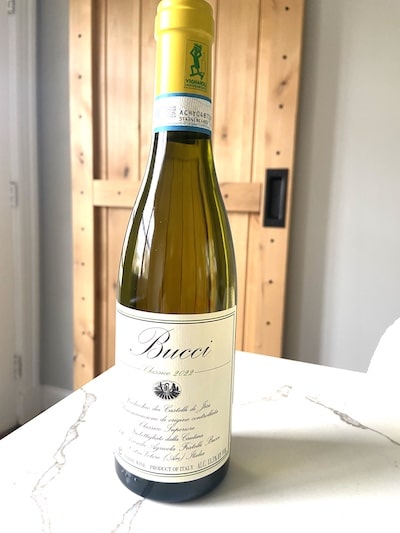
Verdicchio
Verdicchio is a native Italian grape varietal that comes from Italy’s Marche area, which is east of Tuscany and extends further south. These wines can have a green-ish tint to them (learn more about the different colors of wine in this article) and that’s fitting given their name has the word “verde” in it which means green in Italian. Because it’s made from high acid grapes, a Riserva can age well, up to 10 years even. Note, if you’re interested in learning more about aging white wines, have a look at this article. Wine that comes from the historic growing area for Verdicchio is given a Classico designation. You’ll find citrus aromas, mineral notes and hints of almond in its finish. If you’re looking for a good wine to start with, try Verdicchio dei Castelli di Jesi Classico Superiore DOC Bucci. Classico Superiore is the classification for wine from the same region that is fuller in body, with higher alcohol and a more focused fruit finish. Note, DOCG wines often see some oak. Verdicchio is best paired with shellfish and seafood dishes but can also be good with lighter pastas and mushroom risottos.
Gavi
From Piedmont in the northwest corner of Italy, Gavi is a white wine made from the Cortese grape. It has primarily citrus flavors with delicious crispness and acidity. A Gavi wine can be medium-bodied and you can drink it on its own or serve it with a variety of appetizers. It’s also one of the best wines to pair with white seafood pasta dishes, such as linguine alle vongole. You can find more food wine pairing ideas and learn about Gavi di Gavi and other wines from Piedmont in this article.
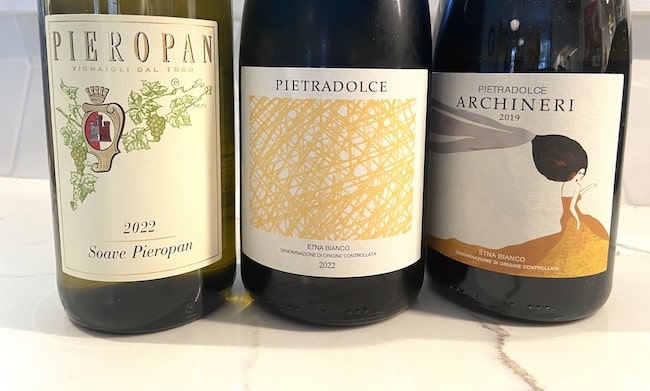
Etna Bianco
The vines at Pietradolce in Sicily are over 120 years. They grow in volcanic soil at high elevations on the slopes of Mount Etna, which is an active volcano in the southernmost Italian province. Despite being so far south, this is actually the last place in all of Italy for vines to blossom each year (at 10,000 feet, it’s the highest mountain in Europe south of the Alps!) Etna Bianco is made from the Carricante grape which is the highest quality white grape in Sicily and is indigenous to the area. This is a high acid wine with notes of citrus and green apple, good minerality and a long bright finish. You’ll find it to be one of the more complex Italian whites with layers of flavor that make it a nice pairing for seafood and white meat dishes.
Other Italian whites to try
- Vernaccia di San Gimignano. Vernaccia di San Gimignano is grown in the small historic town of San Gimignano in Tuscany, a walled village famous for its towers. San Gimignano wines are light-bodied, fresh, crisp and have characteristic almond notes.
- Falanghina. Falanghina comes from the Campania area of southern Italy. It’s an ancient Italian grape-variety that has apple, pear and tropical fruit notes. This wine is medium-bodied and can have some minerals and spice to it.
- Grillo. Grillo was a grape traditionally used for fortified wines but that’s now featured in medium-bodied white wines from Sicily. Grillo wines are bright, fresh, easy to drink and affordable.
- Arneis. From the north, Arneis is a small production white wine with flavors of stone fruit and ripe pear. The complexity of this white makes it a good pairing with soups and white bean dishes, as well as veal. A bottle of Arneis will cost you around $20.
- Orvieto. From Umbria, Orvieto is an Italian white that’s medium bodied and has a floral bouquet with green apple flavors. Wines from Orvieto have good acidity in the finish and go well with a variety of foods.
- Trebbiano d’Abruzzo. There are different types of Trebbiano grapes grown all over Italy. Look for wines that come from the central Italian region of Abruzzo. This wine has great citrus flavors of lemon and lime.
- Pecorino. Also from Abruzzo, Pecorino is an Italian white wine with a medium golden color and characteristic herbal notes. It has aromas of citrus and jasmine with stone fruit, and pear flavors. It may be a harder bottle of wine to find on restaurant menus, but your better wine shops will likely have some.
- Vermentino. This is a dry white wine grown predominantly in Sardinia, Western Tuscany, and Liguria. It’s medium-bodied and can be compared to Sauvignon Blanc in its flavor profile. Vermentino is a great value wine that goes well with a variety of food.
How about sparkling wine?
If you’re looking for a sparkling wine from Italy, Prosecco is probably the most popular. It has notes of pear and peach and can vary in how sweet it is. If you want a dry sparkling wine, it’s best to choose a bottle that says Brut. Extra dry is less dry and Demi-sec is the more sweet option. For an Italian sparkling wine that’s made in the same way as Champagne, try Francia-Corta from the Lombardy region in the north of Italy. You can also pick up a bottle of Alta-Langa, which is sparkling wine from Piedmont.

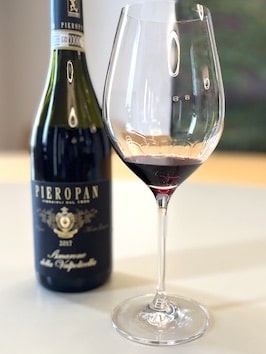
If you’re following a white with a red
If you’re looking to stay with a light to medium-bodied wine, for an Italian red you can go with a Barbera or Nebbiolo d’Alba. These are red wines with good acidity that go with different foods. Chianti Classico, made from the Sangiovese grape, is a red that pairs well with pizza and most classic Italian dishes, especially pasta in red sauce. For a more structured and bold red wine, try a Barolo or Barbaresco from Piedmont, a Brunello from Tuscany, or an Amarone from Veneto which all go well with steak and other red meats.
*Most Italian white wines are produced without oak treatment, with the exception of Chardonnay


